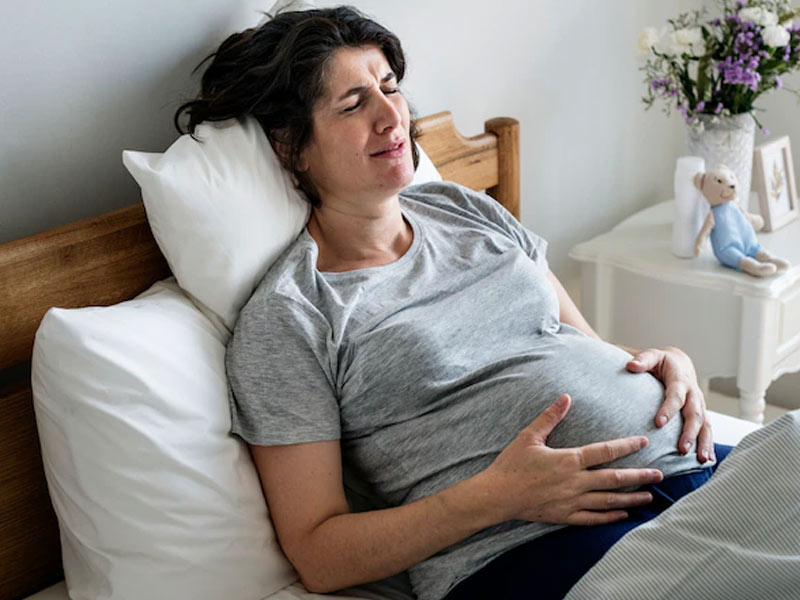
Labour pain can be a lot to handle and many women take precribed medication to get relief. However, it is not the only way out. In fact, natural ways to control labour pain are being used since ages. There are several expert suggested common natural ways such as deep breathing, massage and body movement. In fact, these methods don't even have many side effects on the baby and mother. Giving birth is a natural process, but what's called natural childbirth is the experience of labor and delivery without the use of any medication or anesthesia. Onlymyhealth editorial team spoke to Dr. Ila Jalot, Consultant Gynecologist, Manipal Hospital, Gurugram, to know about non medical and natural ways to manage labour pain.
Table of Content:-
Natural ways to reduce labour pain
There are severa; ways that can help in minimising labour pain without medicines. Each method has its own set of advantages and disadvantages. Here are 7 natural ways for labour pain relief:
1. Water
Most hospitals and birthing centres will have facilities that allow you to have a bath or shower during the first stage of labour. Many women find that being in a warm bath is relaxing and helps them to cope with the contractions. You might also find having a shower can help with any back pain you might be experiencing.
2. Heat pack
Applying warmth is a tried-and-tested way of relaxing aching and tense muscles. So it’s no surprise that it’s a very effective way of providing relief from labour pain. A warm hot water bottle is perfect for warming your back, tummy or groin if you’re in hospital or at home. Use a hot water bottle filled with warm (not boiling) water. Take care to wrap the bottle in a towel or soft cover before you use it.
3. Staying active
Staying active during labor can help women deal with pain and reduce the length of labor. Women have been active in labor for centuries, but a medicalization of childbirth in the West led to an acceptance that women lie in bed. Although you may want to rest on a bed between contractions, many women find that when they feel supported, they'll instinctively want move around and don't cope well lying down, which can increase pain and hamper the progress of labor as your baby pushes against gravity.

4. Changing position
Being comfortable in labour is of course going to make a huge difference in your pain tolerance. The worst position for pain during labour (and the most dysfunctional) is lying flat on your back in bed, next is semi-reclining. Upright, forward leaning positions are ideal, as when your uterus contracts, it actually contracts forward.
5. Acupuncture
Acupuncture can reduce pain in labour and reduce the need to use forceps. It is not clear how it works. There are no known side effects of acupuncture for mother or baby. Only a trained person should perform acupuncture. Not all hospitals have an acupuncture therapist on staff. You may need to discuss arranging your own practitioner.
6. Rythmic breathing
Breathing is a simple and widely used natural pain-management technique and an effective way to help manage your contractions. Focusing on your breathing is a really helpful way of getting through each contraction.
7. Aromatherapy

Aromatherapy in labour has many great uses. If you are giving birth in hospital, it can provide a nice smell to mask the smell of the hospital, enabling you to relax a little more. While some essential oils are not advised during pregnancy and labour, it is perfectly safe to burn any oil in your burner.
Some women use music or songs they find meaningful. So go ahead and pick what you like as you get ready to welcome your baby. If these methods don’t work, or you don't get a chance to try them out, don’t hesitate to ask your doctor for suitable medical pain relief.
Also watch this video
How we keep this article up to date:
We work with experts and keep a close eye on the latest in health and wellness. Whenever there is a new research or helpful information, we update our articles with accurate and useful advice.
Current Version